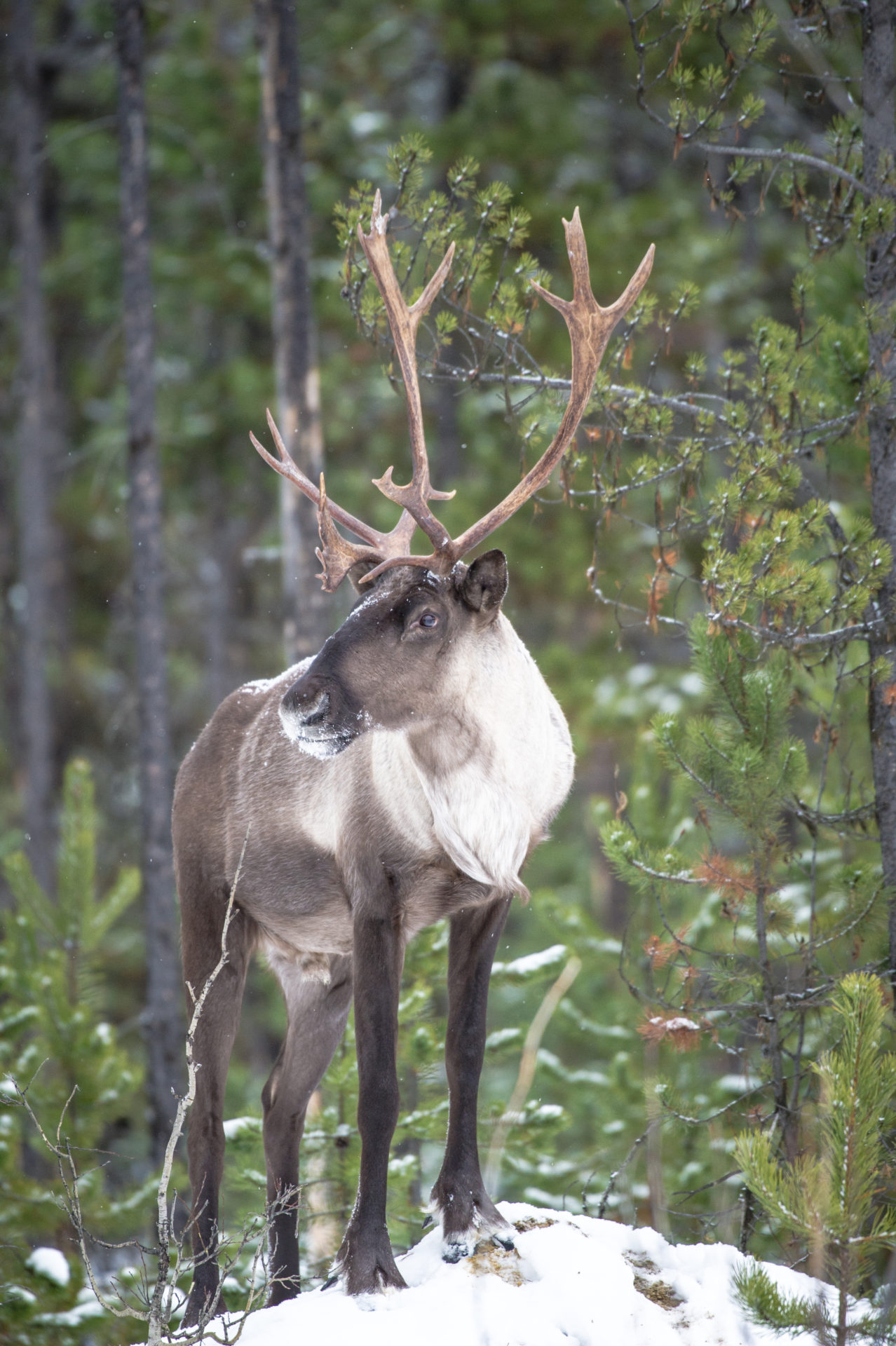The European reindeer and the North American caribou are simply different names for the same species, Rangifer tarandus. Clement C. Moore made reindeer familiar to many generations of kids with his 1827 poem, The Night Before Christmas (originally called A Visit from Saint Nicholas), but those animals are magic and not like the real ones. Reindeer don’t fly, and probably never did in their evolution over the past million or more years. In northern Europe, reindeer are domesticated, so getting eight of them to pull a sleigh is likely possible, although no one bred them to be tiny.
Advertisement

Caribou (reindeer) are not tiny, but one of the larger members of the cervid (deer) family. They have a typical cervid body shape, with dark grey coats and creamy white hair on their shoulders, chests, bellies and underside of their tail. The pale-coloured mane is particularly obvious on bulls during the rut (October). Most of their head and face is covered in dark hair. In Canada, there are four subspecies of caribou: the Peary caribou of the Arctic Islands, two types of barren ground caribou on the mainland Arctic tundra, and woodland caribou of northern forests. BC caribou are the latter. A bull woodland caribou weighs about 200 kilograms, and a cow is about two-thirds that weight.
The caribou antlers have long, oval-shaped main beams that sweep back, then up and forward to form a ‘C’ shape. The ends are semi-palmated and may include several points. The brow tine (or tines) can also be palmated and oriented vertically. Caribou are unique in the deer family in that cows regularly grow antlers, smaller versions of the bulls’ antlers. The large antlers of mature bulls impress other caribou during the rut in October. After the mating season, bulls shed their antlers, but cows retain their antlers through the winter. So, Santa’s reindeer, having antlers on Christmas Eve, are most likely an all-girl team.
Advertisement
Caribou calves are born in the spring and are raring to go at birth. They can run within an hour of being born, run several miles after a few hours, and by the end of their first day of life can apparently outrun a human marathoner. Caribou feed on forbs and grasses, but lichens, both arboreal (growing on trees) and terrestrial (growing on the ground), are a key component of their diet. This is obviously a nutritious mix, because caribou milk is rich, up to 22 per cent fat, compared with three to four per cent fat in dairy cow’s milk.
Caribou have several adaptations for the challenges of their life in northern latitudes and alpine. From head to toe, they are built for the cold. Inside their nose, there is a heat exchange system that captures body heat from exhaled air that then pre-warms inhaled air before it enters the rest of their body. Their coat consists of a dense, wooly layer next to their hide, covered by long, hollow guard hairs. The insulating property of this combination is so effective that caribou can be comfortable at -40 degrees Celsius. Caribou hide sleeping bags were used by generations of Arctic people and were the choice of early Antarctica explorers. The hollow hairs provide buoyancy and the enlarged hooves help make caribou the best swimmers of the cervid family. Their hooves are extra wide, to help walk on muskeg or snow and to dig through snow to access terrestrial lichens. In winter, the leathery pads between the halves of the hooves shrink so that only the hard, outer rims of the hooves touch the ice and snow.
Advertisement
Woodland caribou have not fared well in association with humans. Currently there are about 15,000 caribou in BC, down from 40,000 in the last century. Three reasons are over hunting, habitat loss and predation. Arboreal lichens, key caribou food, grows best on old trees. Recently, massive forest fires and forest insect infestations, industrial development, residential development, agriculture, transportation corridors and backwoods recreation have all taken a toll on caribou habitat. Some of these habitat changes have allowed deer and moose populations to increase and predator (wolves, cougars and coyotes) numbers are not far behind. Woodland caribou are more susceptible to predation than other cervids. Most of BC’s caribou populations are declining and some will never recover because their habitat is permanently altered. Actions such as predator control can slow the decline, but for the long term, habitat recovery and protection are needed to ensure that real reindeer thrive in BC.